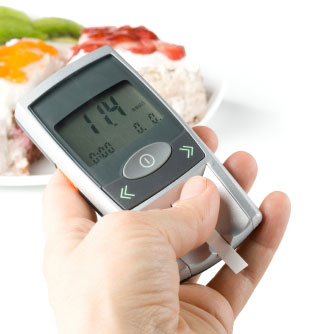
Written By: Sejal Dave, RD
Title: Registered Dietitian
Alumni: University of Florida
Last Updated on:

You’ve probably heard over and over again that it’s important to have good blood sugar levels. But exactly what is considered “good”? What are normal blood sugar levels? Are there different numbers or goals for people with diabetes? Here’s a guide to help you learn more about your diabetes numbers.
Table of Contents
Blood sugar is usually measured at different times during the day. The most common time to check your blood sugar is before you eat (pre-prandial) and 1-2 hours after you have started a meal (post-prandial). The table below shows normal blood sugar levels for adults who do not have diabetes.

The American Diabetes Association (ADA) recommends that people with type 2 diabetes should aim for blood sugar levels that are as close to normal as possible; this is referred to as “tight control.” The better your blood glucose control is, the less likely you are to have diabetes-related health complications. This table lists the current blood glucose goals for people with diabetes.
If you are unsure about your current diabetes numbers, you should speak to your health care provider for individual advice.
HgbA1C (glycosylated hemoglobin) is commonly referred to as your A1C number and is done at your doctor or health care provider’s office. This test measures your average blood sugar over the past two to three months and gives you an overall picture of your blood sugar control. What should your number be? The A1C goal for people without diabetes is less than 6%; for people with diabetes the goal is less than 7%. The A1C percentage corresponds with an actual blood glucose level. For example, an A1C of 7% is equal to an average blood sugar level of 154 mg/dL (8.6 mmol/L) , and an A1C of 10% is equal to a blood sugar level of 240 mg/dL (13.3 mmol/L). So don’t be fooled by the small difference between 7% and 10% – these numbers reflect two completely different levels of blood glucose control.
Your diabetes numbers give you a snapshot of how well you are managing your health. Successful diabetes control includes knowing your own diabetes numbers and being aware of what the goals are for people with diabetes. Speak to your healthcare provider if you want help improving your numbers, because “good” diabetes numbers can be just a step away from “great” diabetes numbers.
Alumni: University of Florida – Sejal is a registered dietitian, a certified diabetes educator and she holds a masters degree in nutrition and health. Sejal was the project coordinator for the Veteran’s Administrations (VA) national weight loss program and previously worked for the VA hospital in Tampa, FL as a Spinal Cord Injury dietitian.
Sejal has had numerous clinical and community education experiences, including pediatric and intensive care nutrition support. She has also had the opportunity to teach nutrition courses at the community college level to students interested in pursuing health professions. One of her favorite areas of education is diabetes management.
blood sugar, diabetes, diabetes diet, sugar